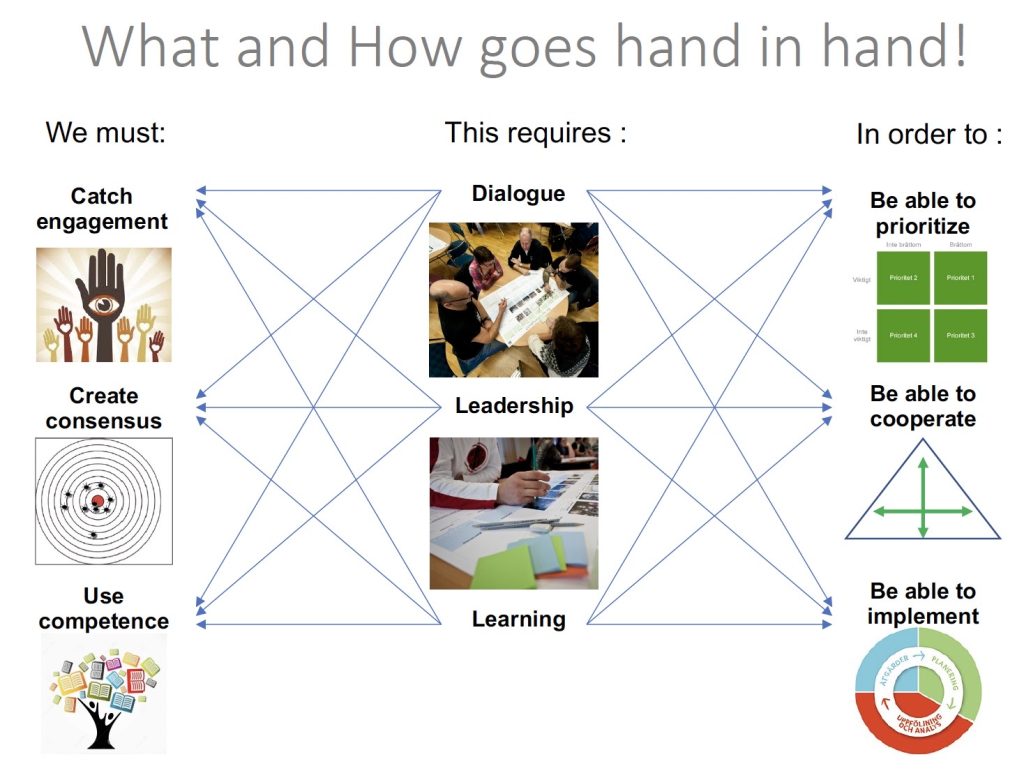All organisations are built from collaboration around a common idea of what shall be accomplished and how this should happen. The focus on sustainability is not only complicated; it needs a complex transformation and changes the conditions for collaboration and concerning everyone in an organization. Transformative Learning is a central component to answer this need. This means everyone must translate these new thought models, business ideas, core values, and strategies into action.

Simultaneously, the leadership formats have changed. Commands and instructions have been replaced with leadership arrangements where employees at all levels are expected to think independently and shoulder greater responsibility. Dialogue and participation are the main pedagogical ideas in the program to answer this.
””By offering tools and methods to enable conversations with all employees in an organization, we can create engagement, participation, and responsibility-taking and wor” ”” from words to actio”” in a question many perceive as complex and demanding. The scalability makes it possible to reach vast target groups quickly for a low cost” ” By offering tools and methods to enable conversations with all employees in an organization, we can create engagement, participation, and responsibility-taking and work”“from words to action” in a question many perceive as complex and demanding. The scalability makes it possible to reach vast target groups quickly for a low cost.””By offering tools and methods to enable conversations with all employees in an organization, we can create engagement, participation, and responsibility-taking and work” from words to action” in a question many perceive as complex and demanding. The scalability makes it possible to reach vast target groups quickly for a low cost.” By offering tools and methods to enable conversations with all employees in an organization, we can create engagement, participation, and responsibility-taking and work “from words to action” in a question many perceive as complex and demanding. The scalability makes it possible to reach vast target groups quickly for a low cost.

THE SOLUTION
The place for the Lab is carefully chosen, preferably in connection with a beautiful natural environment. Before a Lab, current dilemmas and pressing issues are identified. Partly questions that apply to the organization, but also the individual. This can form the guiding idea. Through a reflective, strategic dialogue, the group approaches the core of the central issues. The Lab often becomes a valuable start to a more significant and transformative development by asking questions and opening up to different answers in-depth. During the Lab, a joint strategic compass is landed and calibrated.
Examples of questions and guiding ideas that could be answered;
– In what way will the learning results be deposited in the business?
– What kind of desirable change do we want to see?
– How can / will this be followed up?
– Which stakeholders are affected?
– What are the controlling factors – external/internal?
– What knowledge is needed, and who is sitting on it?
– E t c

